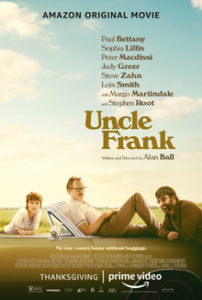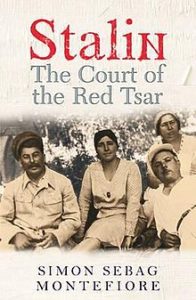
Uncle Frank
World premiere Jan. 25, 2020 at the Sundance Film Festival
Written and directed by Alan Ball
Starring Paul Bettany and Sophia Lillis
Available on Amazon Prime
Part coming-of-age story, part road-trip, part time piece, Uncle Frank is a mostly feel-good movie about a young southern woman in the 1970s whose transition to adulthood is complicated by learning that her favorite uncle is gay.
What I Liked About It
* Great performances by Bettany and Lillis.
* It could have been just a feel-good movie. But it is, in the end, better than that.
* It was a good reminder of how closeted homosexuality was in the 1970s.
What I Didn’t Like So Much
Knowing Ball’s work beforehand (see About Alan Ball, below), I was expecting a bit more irony and originality than Uncle Frank delivered.
Critical Reception
Uncle Frank was nominated for and/or won many festival awards, but did not snag any of the majors.
* “Uncle Frank doesn’t have the witty indirectness of American Beauty or Ball’s TV classic Six Feet Under, but it has a strong and very convincing performance from Bettany.” (Peter Bradshaw, Guardian)
* “It’s a poignant dysfunctional family drama laced with warmth, sadness, humor, and hope.” (Randy Myers, San Jose Mercury News)
* “Uncle Frank, a finely acted, often deeply emotional period piece that, despite its share of strong moments, stacks the deck too much for its own dramatic good.” (Gary Goldstein, Los Angeles Times)
You can watch the trailer here.
Interesting
Uncle Frank came out (no pun intended) in 2020 – a year after Alan Ball’s American Beauty won five Oscars, including Best Picture.
About Alan Ball

Uncle Frank is not an autobiography, Ball said. But it was, he admitted, autobiographically inspired. Ball grew up and went to college in the South (Georgia and Florida). He escaped to New York City, where being gay was more accepted.
After American Beauty and Uncle Frank, Ball developed Six Feet Under, True Blood, and the short-lived Here and Nowfor HBO.
 MarkFord
MarkFord

